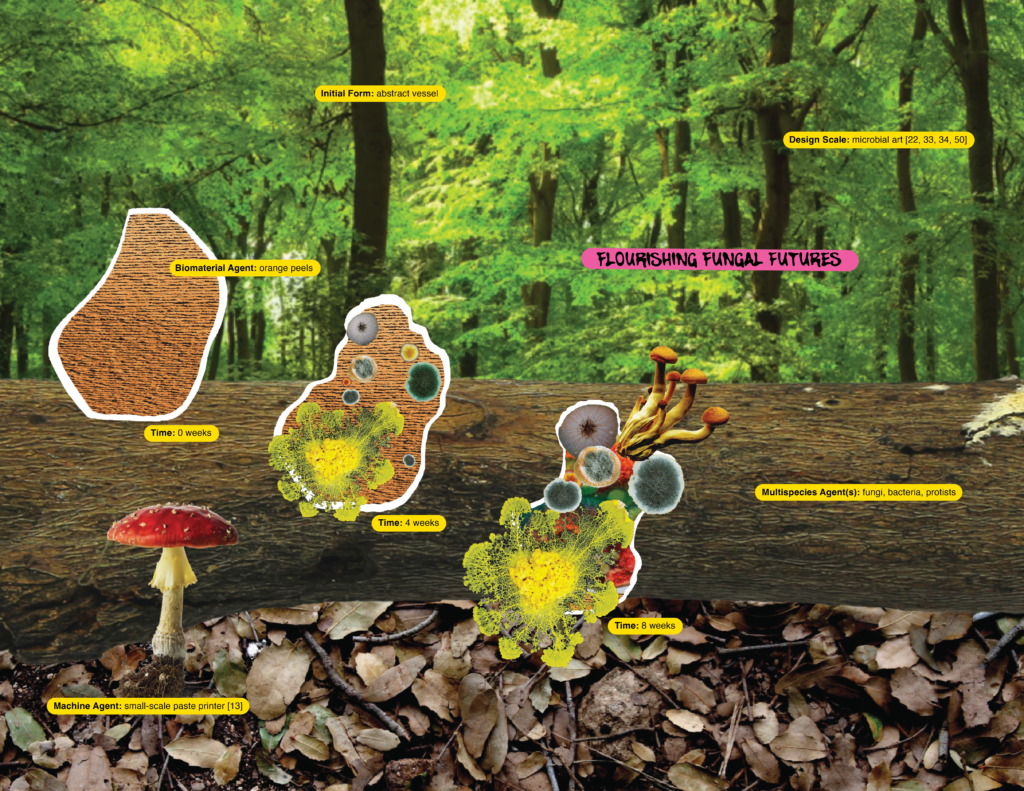Directions for Degradation
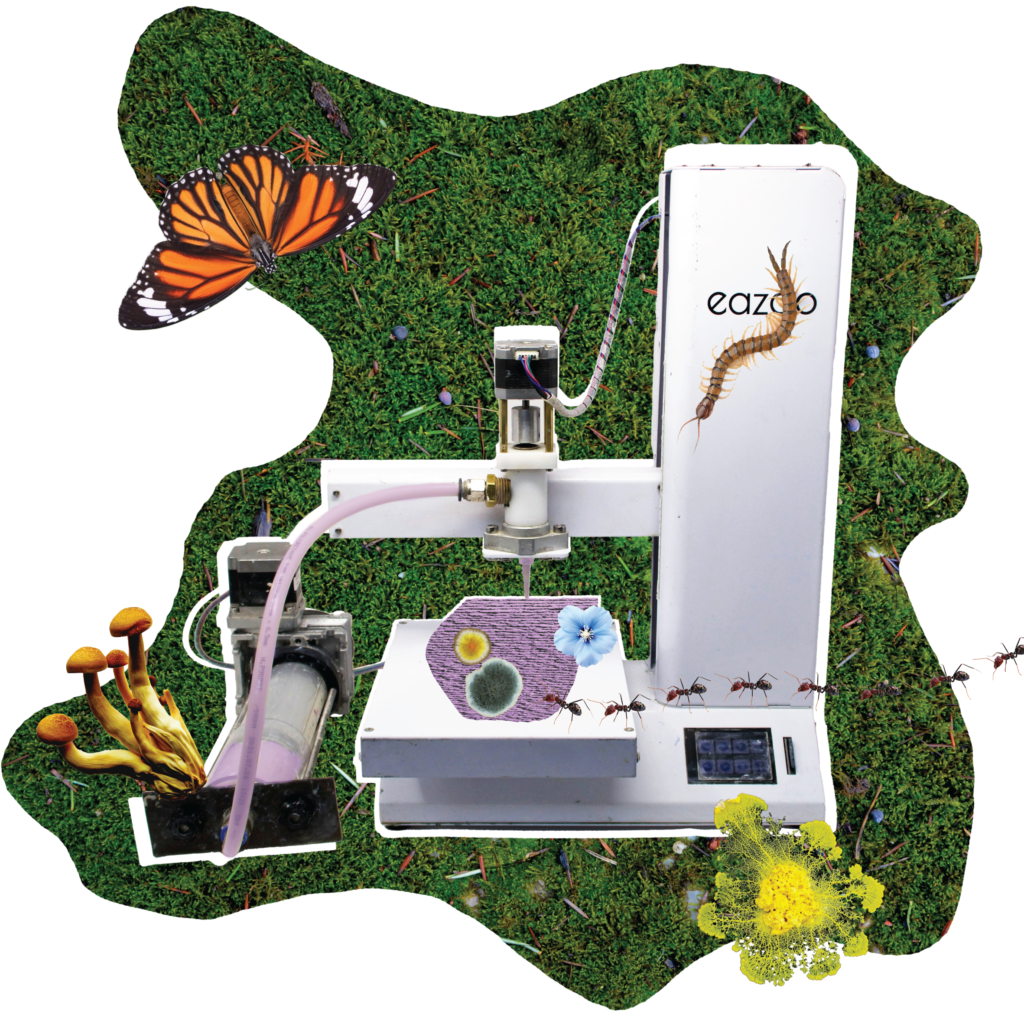
As design practitioners begin to consider methods for sustainably disposing of what is made, we explore potential directions for designing with the multispecies-driven degradation of 3D printed biomaterial objects. We present three past encounters with multispecies agents—plants, insects, fungi—that degraded biomaterial samples in our lab. Based on these encounters, we speculate on near-future engagements that such organisms might have with our printed biomaterial objects, where an object is transformed through degradation over time. In these scenarios, we pose multispecies agents as co-designers and co-fabricators of objects, exemplifying how we might reconfigure entangled relationships between human and more-than-human agents in the making-with process and how we might leverage our situated position as human makers to enable planetary flourishing.
Years:
2024-current
Collaborators: Fiona Bell and Leah Buechley
Publications:
Fiona Bell and Leah Buechley. 2024. Directions for Degradation: Multispecies Entanglements with 3D Printed Biomaterials. In Proceedings of the Halfway to the Future Symposium 2024 (HTTF 2024). Association for Computing Machinery, New York, NY, USA.
Past Encounters
We base our speculations on three past multispecies encounters we experienced when developing biomaterials for clay 3D printing. These situated encounters occurred during the development of new biomaterials, in which nonhuman living organisms intervened with various test samples.
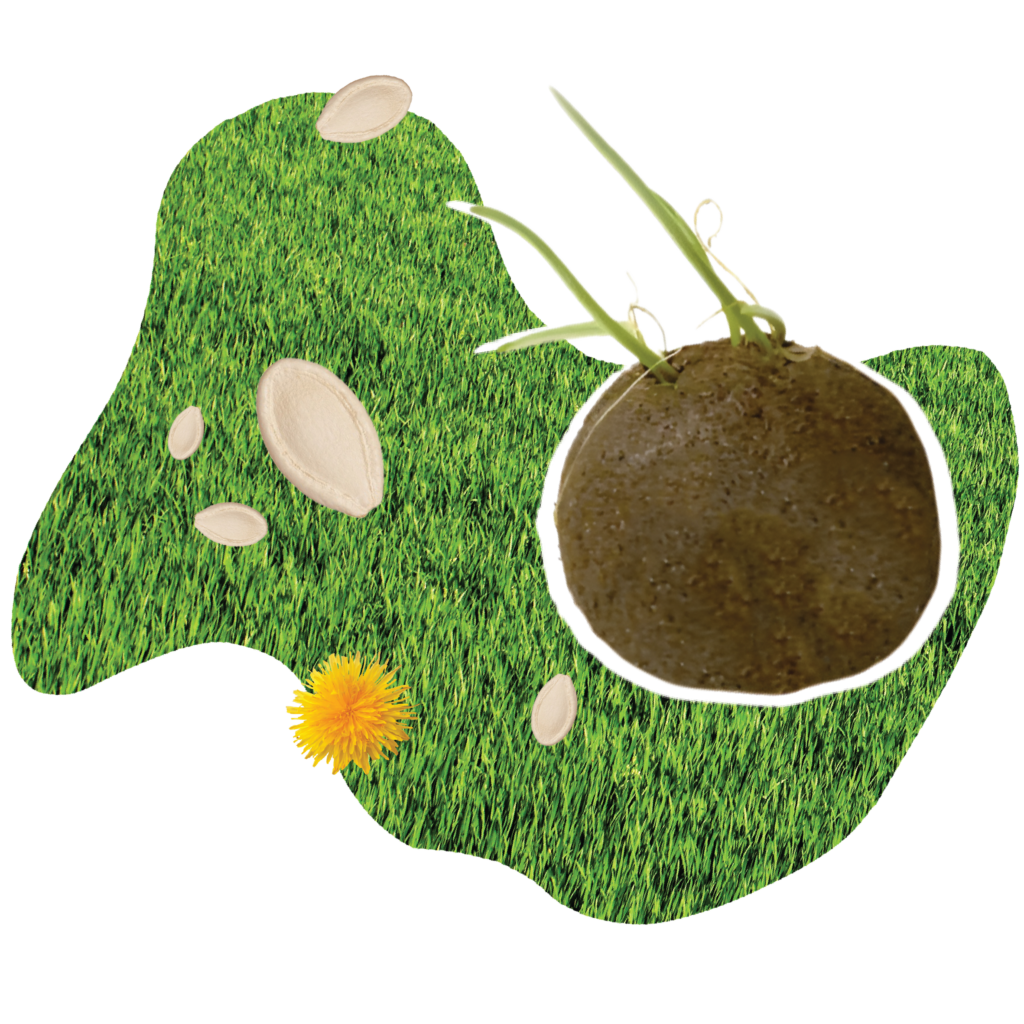
Plants: In the creation of a biomaterial made from composted food waste, we noticed that the compost itself contained several living organisms—such as worms, maggots, and, notably, different types of fruit and vegetable seeds. We found that some grass seeds began to sprout from one of our biomaterial samples, when lightly watered and kept in a warm, light location.

Insects: During the development of a biomaterial consisting of corn and wheat flour (dyed blue with food colorant), we found a collapsed test print that was eaten by ants. While the external structure of the print was mostly intact, internal portions were eaten away, revealing unexpected patterns.
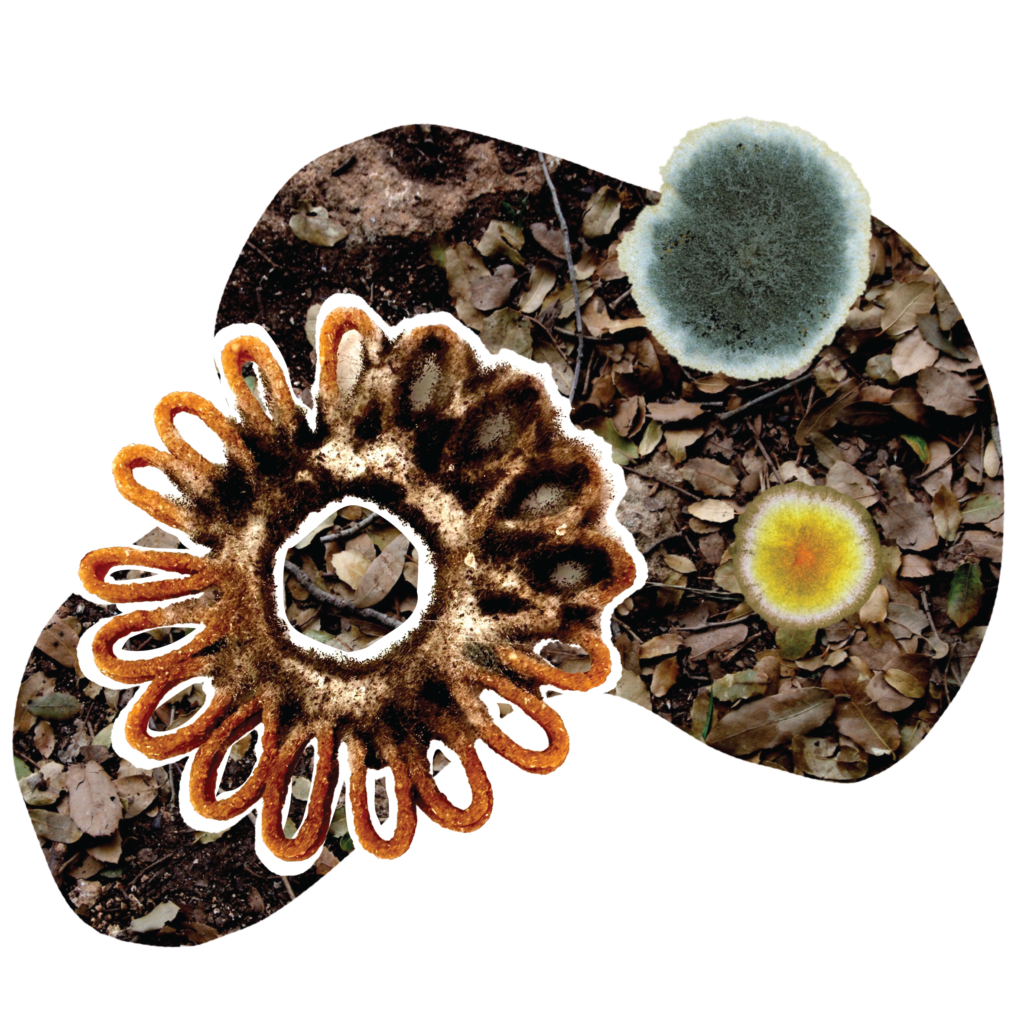
Fungi: When drying a biomaterial made from orange peels, we found distinct differences between drying prints in a dehydrator (130°F/55°C) versus on a desk in our lab (70°F/21°C). The orange peel prints dried “normally” in a dehydrator, however, when they were dried on a desk, the prints started to mold. The mold continues to propagate on these prints even now, half a year after they were printed.
Future Engagements
Informed by our past encounters, we speculate on near-future engagements that plants, insects, and fungi might have with our 3D printed biomaterials, where initially printed objects are transformed into something new through degradation.
The Sprouting Soil Structure examines degradation via plants as they slowly grow from a 3D printed architectural structure. We envision printing a dome from nutrient-rich compost and site-specific soil that contains seeds—a hybrid assemblage of living and non-living organic matter. In a matter of decades, we wonder how the structure will become a part of the ecosystem it entangles with. What purpose/function will the structure serve in 10, 50, or 100 years?
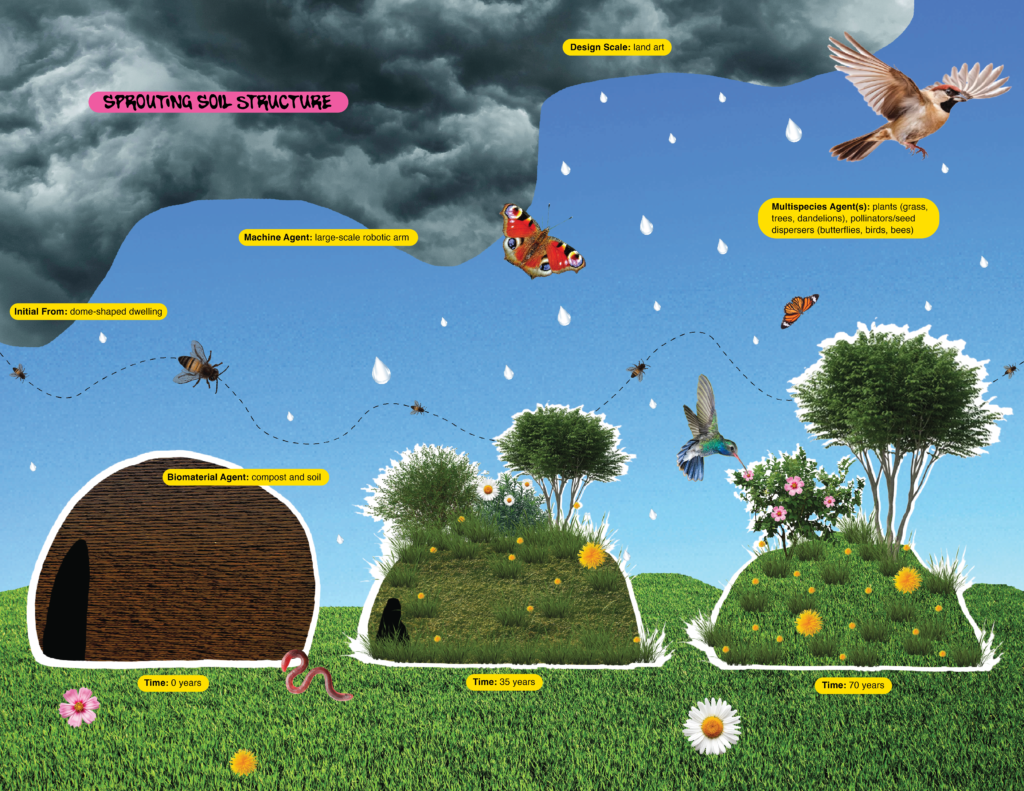
Dinner(ware) for Desert Dwellers probes degradation via consumption as a mode of co-design and co-fabrication. We envision 3D printing “dinnerware” that, over time, is consumed by multispecies agents such as ants, who are some of the most accomplished architects in the world. At what point does the object transition from being an intentionally degraded art object (i.e., dinnerware) to being an entirely degraded mass of food (i.e., dinner)?
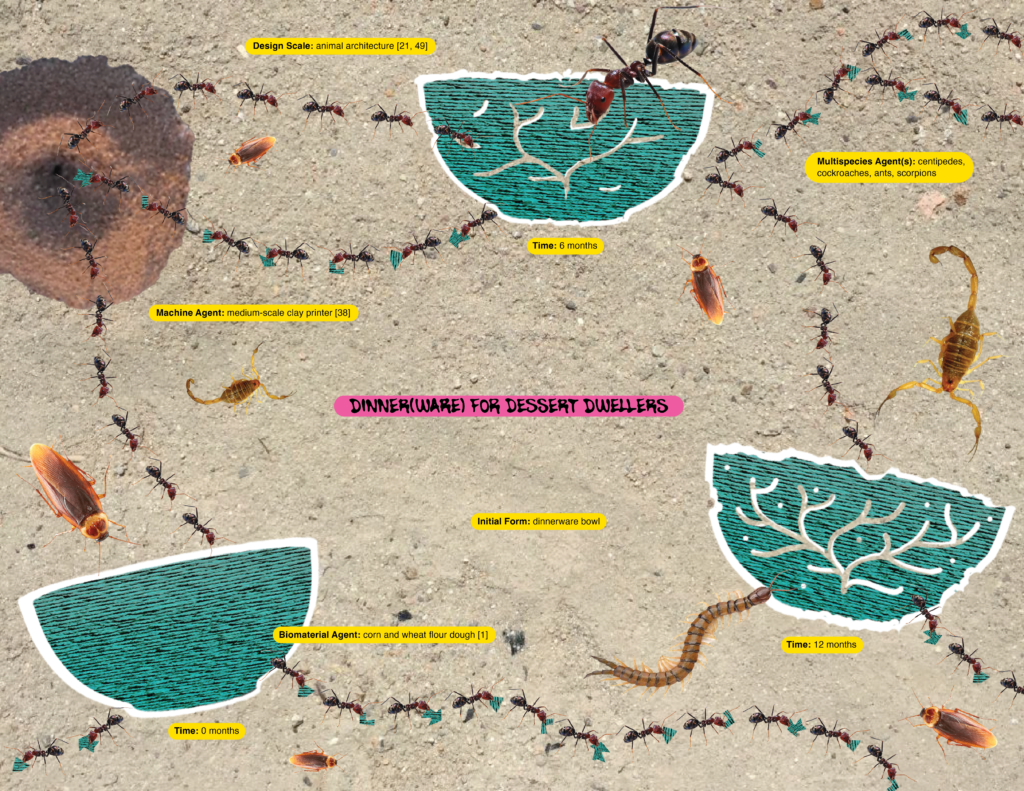
Flourishing Fungal Futures explores fungal-driven degradation of our biomaterial objects. We envision fungi growing both on and around the printed object, rapidly transforming the color, surface texture, and eventually form, into something vibrant and unfamiliar. Would directly supporting fungi cause a chain reaction of multispecies flourishing? Could this object make-with fungi to build more resilient, entangled ecosystems?
